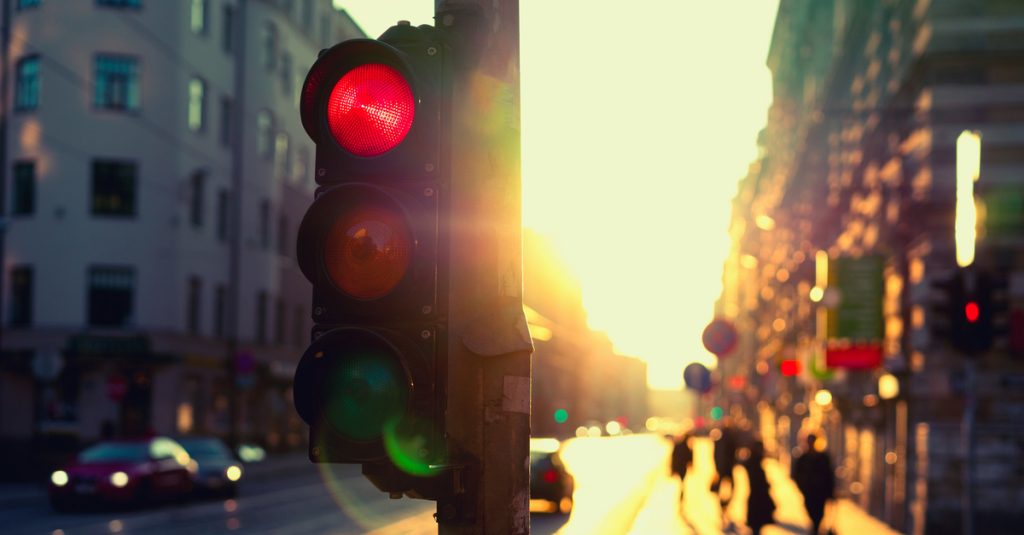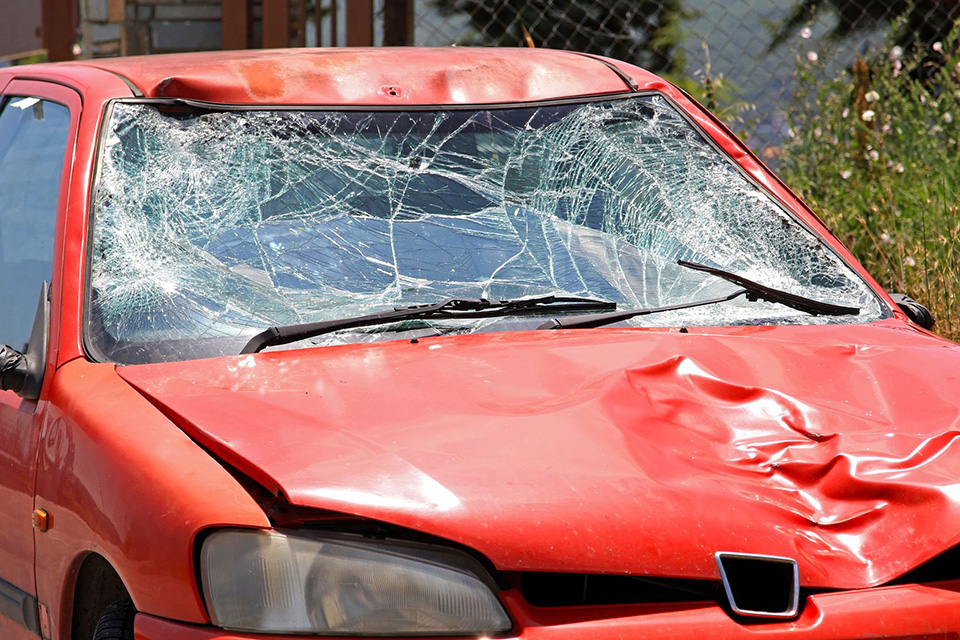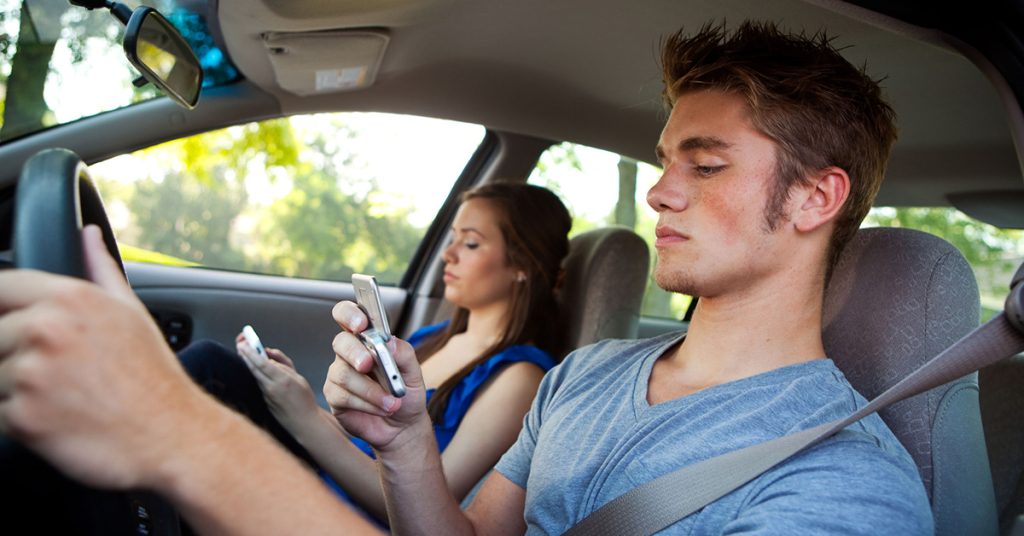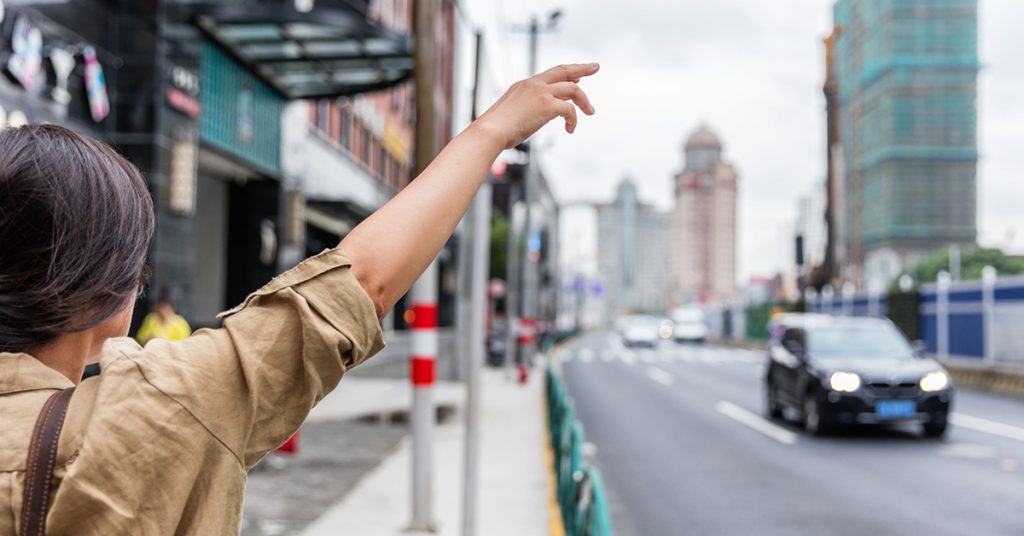Motor Vehicle Accidents
Massachusetts Parents: Reminders About Child Passenger Safety Seats

When properly used, child passenger safety seats can reduce the risk of fatal accidents by 71 percent for infants and by 54 for toddlers, according to the NHTSA.
Buying a car seat takes careful research. But most parents agree: the real hardship comes after you try to buckle your child up safely. While car seats are essential, they are anything but easy to use. And if you use them incorrectly, your child is left without proper protection.
All 50 states have laws requiring car seats for children. In Massachusetts, parents must secure their children in a federally-approved seat until they reach age 8 or over 57 inches tall. This is critical because car accidents are a leading cause of death for children ages 1 to 13, according to the National Highway Traffic Safety Administration (NHTSA). For every 32 seconds in 2017, a child under 13 was involved in a passenger vehicle crash.
We are writing about car seats because the NHTSA and other organizations recently observed Child Passenger Safety Week nationwide from Sept. 15 to Sept. 21. If you missed it, we are sharing a few resources and tips. If you are a parent, don’t lose hope. There are a lot of resources out there. The best place to start is with your local police department. Many police departments offer free car seat inspections year-round by appointment.
Selecting a Safe Car Seat
The NHTSA offers a free online resource to help parents select the right car seat. Parents should follow the manufacturer’s recommendations on age, weight and height recommendations for selecting car seats. NHTSA Find & Compare Car Seats
Types of Car Seats
Rear-facing seats. The NHTSA encourages children to use rear-facing seats up until age 3 or they reach the top of the manufacturer’s height and weight requirements. Always check your product manual for this information.
For the first 8 or 9 months, children should ride in rear-facing infant seats. The NHTSA then advises a move to a convertible or all-in-one seat, and that parents keep children rear-facing as long as they can.
As we said, it’s important to read your product manual and the manufacturer’s instructions. In past years, the recommendation was to keep your child in a rear-facing car seat until age 2. But new research has led to a new recommendation. In 2018, the American Academy of Pediatrics announced children can remain in rear-facing seats until they reach 40 pounds or more. While every child is different, this often comes after a child’s second birthday.
Forward-facing seats. Next, children will move into a harness and tether seat. This type of seat limits their forward movement if the car crashes. There are three types of forward-facing seats: convertible, combination and all-in-one.
Booster seats. These give children a boost so they can sit taller and safely use seat belts.
Without booster seats, seat belts can seriously injure children, causing abdominal bruising and injuries. Compared to seat belt use alone, booster seats are shown to reduce the risk for injury by 45 percent in children ages 4 to 8, according to the Centers for Disease Control and Prevention (CDC).
As with the other car seats, there are several types of booster seats: booster seats with high backs, backless booster seats, combination seats and all-in-on-seats.
In 2008, Gov. Deval Patrick signed the Massachusetts Child Passenger Safety Law, adding the booster seat requirement until children reach age 8 or 57 inches tall. At that point, children can move to regular seat belts in the back seat.
Making this transition earlier can leave your child without proper protection and vulnerable to injury. Unfortunately, parents are making this mistake. About 26 percent of children were moved to seat belts too early, according to the NHTSA.
Car Seat Registration and Expiration
Make sure to register your car seat with the manufacturer so the company can contact you if there is a recall. Car seats are frequently recalled and these can be widespread recalls, including mislabeling or defective parts. In 2014, Graco recalled 3.7 million car seats due to defective buckles, disrupting families across the country.
Remember, car seats have expiration dates. Look for the sticker at the bottom. The expiration date should be about six years from the manufacture date.
Never use a car seat beyond the expiration date. While the seat may appear to be in good condition, the plastic and other parts wear from daily use and exposure to sun, making the product less effective in protecting your child.
About Breakstone, White & Gluck – Boston Personal Injury Attorneys
Breakstone, White & Gluck has over 100 years combined experience representing those who have been injured and killed by the negligence and wrongdoing of others, including by car accidents. In 2013, we launched our Project KidSafe campaign to offer education and safety resources for children and families in Massachusetts. Learn more about Our Attorneys and our Project KidSafe campaign.
If you have been injured by someone else’s negligence, learn your legal rights from one of our attorneys. For a free legal consultation, call 800-379-1244 or 617-723-7676. You can also use our contact form.
NBC Boston Interviews Attorney David W. White About Hidden Dangers of Electric Scooters
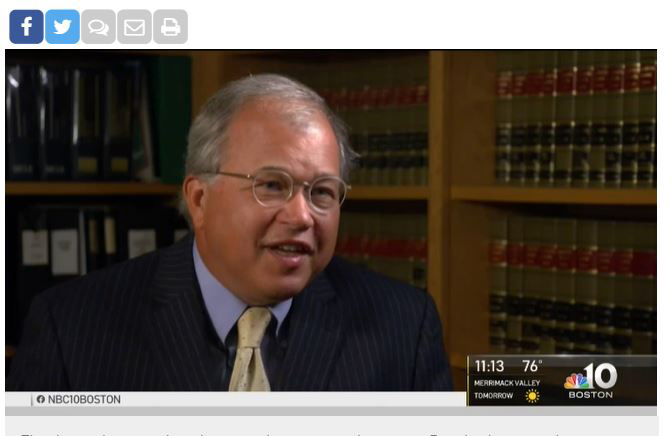
Attorney David W. White was interviewed by NBC Boston and said consumers are surrendering key rights when they enter into e-scooter agreements.
Electric scooters may look like an easy and convenient way to travel. But as they move into Massachusetts, there are definitely words of caution for riders.
Attorney David W. White was interviewed as part of NBC Boston’s coverage on e-scooters. He told NBC Boston’s Ally Donnelly that riders are often unaware of how vulnerable they are. If they are injured, they may look to their health insurance plan for coverage. But if they hit a pedestrian or cause property damage, they are on their own.
“You’re putting everything in the hands of the company and preserving essentially no rights for yourself whatsoever,” Attorney White said.
When riders accept a scooter company’s user agreement, they agree to resolve any issues through confidential arbitration with the e-scooter company and the maximum award is $100 – no matter what the situation. In most cases, when someone is seriously injured, they may require medical expenses as well as other damages, such as lost wages and pain and suffering.
But he said, “The most they will ever give you if they give you anything is $100.”
NBC Boston interviewed scooter riders in Brookline who admitted they hadn’t read the user agreement. While it appeared tiny on a cell phone, NBC Boston found one agreement actually printed out to 50 pages.
Attorney White said, “Our legislature is a decade behind this issue. Our insurance industry is a decade behind this issue. Everyone should care about this.”
The Boston City Council approved scooter regulations last March. Meanwhile, the Town of Brookline launched its e-scooter pilot program last April, bringing 200 scooters to the road. The program continues through mid-November.
In Massachusetts, Debate Continues on Ignition Interlock Devices for First-Time Drunk Drivers
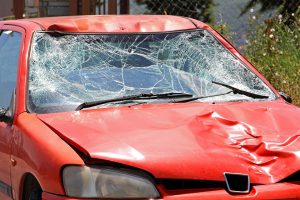
The Massachusetts Legislature is being asked to reconsider a ignition interlock law for first-time OUI offenders.
Many of us recall when Massachusetts passed Melanie’s Law to increase penalties for drunk drivers. This was a landmark bill aimed at preventing drunk driving injuries and deaths.
Yet today, when it comes to drunk driving laws, Massachusetts now falls behind some expectations. While ignition interlock devices are mandatory for repeat drunk drivers, they are not required for first-time offenders.
Each year, Mothers Against Drunk Driving (MADD) asks Massachusetts lawmakers to extend the requirement to first-time offenders. According to the advocacy organization, 119 people are killed each year in Massachusetts drunk driving crashes and that drunk driving fatalities account for 31 percent of all drunk driving deaths.
In January 2019, Gov. Charlie Baker and Lt. Karyn Polito included the measure in the administration’s road safety bill. According to the State House News Service, a hearing was held on the bill, but it remains to be seen if we will hear more this year. There was more than one bill filed this year, but no update since the summer.
Massachusetts Drunk Driving Laws
Massachusetts lawmakers passed Melanie’s Law in 2005 and this took effect in 2006. Named for the 13-year-old victim of a drunk driver, Melanie’s Law increased penalties for those charged with operating a motor vehicle under the influence of alcohol or controlled substances. It also increased jail time in drunk driving accidents resulting in serious injury and death.
Melanie’s Law was the state’s introduction to the ignition interlock device, a small unit designed to detect alcohol on one’s breath. The device is electronically connected to the vehicle’s ignition and won’t allow drivers to operate if they are intoxicated. Over the past 13 years, ignition interlock devices have been installed for more than 17,000 drivers, according to Mass.gov.
According to MADD, ignition interlock devices stopped drivers 31,845 times in Massachusetts between December 1, 2006 and December 1, 2016.
State by State: Ignition Interlock Laws
The national debate over ignition interlock devices dramatically changed in 2013. This is when the National Highway Traffic Safety Administration (NHTSA) released new model guidelines encouraging states to pass requirements mandating use of ignition interlock devices for first-time offenders. States were also urged to establish a minimum period of time for use.
According to the National Conference for State Legislatures, 28 states and the District of Columbia now have mandates for all offenders. These include New Hampshire, Vermont and Connecticut. The ignition interlock law is slightly different in Maine. Rather than mandating use, first-time offenders are eligible to get their license back earlier (after 30 days) if they keep the ignition interlock installed for the remainder of their sentence.
Like Massachusetts, Rhode Island requires use of ignition interlock devices for repeat offenders, though there are differences in the state laws.
Federal Law: Ignition Interlock
MADD isn’t the only organization pursuing ignition interlock devices. The Chicago Tribune reported a former NHTSA administrator was before Congress this summer, urging members to pass a law mandating automakers build vehicles with passive ignition interlock devices. According to the official, the technology has been available since 2006 and wider use could save up to 7,000 lives each year.
Breakstone, White & Gluck – Boston Car Accident Attorneys
At Breakstone, White & Gluck, our Boston car accident lawyers specialize in investigating all types of car accidents, including those caused by drunk drivers. With more than 100 years combined experience, Breakstone, White & Gluck has represented numerous drivers who have been struck by intoxicated drivers. In drunk driving claims, the injured person may be entitled to compensation from the at-fault driver’s auto insurance policy. Additional compensation may also be available through other sources, including restaurants, bars and other establishments.
Learn your legal rights. For a free legal consultation, contact us at 800-379-1244 or 617-723-7676 or use our contact form.
Drivers Running Red Lights Causing Record Number of Car Accidents in Massachusetts, Across the U.S

Drivers who run red lights are causing a record number of deaths in Massachusetts and across the U.S., according to a new study.
While red means stop, we have all seen cars speed on, especially if you live in Boston. Our attorneys have represented countless clients who have been seriously injured or killed by another driver’s recklessness at intersections. Now, a new study reports running a red light is causing a record number of traffic fatalities across the United States. From AAA’s Foundation for Traffic Safety:
- Red light running crashes have reached a 10-year high in the U.S.
- 939 people were killed when drivers sped through red lights in 2017, a 28 percent increase over 2012.
- More than a quarter of all intersection accidents happen because drivers run red lights.
- Nearly half of those injured in red light crashes were passengers or occupants of other vehicles. Pedestrians and cyclists accounted for more than 5 percent of fatalities.
- Over 35 percent of traffic deaths were red light running drivers themselves.
- 85 percent of drivers consider it very dangerous to run a red light, yet one in three reported speeding through one in the past 30 days, according to AAA Foundation’s Traffic Safety Culture Index.
- On the same note, nearly half (more than 2 out of 5 drivers) found it unlikely that they would ever be stopped by law enforcement.
- Despite these responses, running a red light can have serious consequences, resulting in a possible insurance surcharge or criminal charges.
AAA officials count Americans driving more and distracted driving as two causes. Meanwhile, the Federal Highway Administration reports more than 50 percent of fatal and injury crashes in the U.S. happen at or near an intersection.
Massachusetts Red Light Accidents
Red light crashes are a danger at Massachusetts intersections. From 2008 to 2017, Massachusetts lost 43 people when drivers ran red lights, according to Wicked Local. These deaths are just the drivers who were caught and are in addition to other injuries.
Safety Recommendations: Roundabouts and Traffic Cameras
AAA officials say roundabouts and traffic cameras could reduce the number of crashes. Massachusetts is actively working to convert rotaries into roundabouts, which are considered safer because they force drivers into the correct lanes. However, with more than 100 rotaries across Massachusetts, change will take time.
There is long-standing opposition to traffic cameras at Massachusetts intersections, even as AAA says traffic cameras have reduced fatal red light running crashes by 21 percent in large cities. Overall, traffic cameras have contributed to a 14 percent reduction in all fatal crashes at signalized intersections.
Unlike some states, Massachusetts does not have a state law permitting use on local intersections. While MassDOT operates traffic cameras along the MassPike, there is a battle over local intersections.
More than a decade ago, several Massachusetts communities attempted to pass ordinances allowing for red light cameras, among them Saugus, Lawrence and Springfield. South of Boston, Brockton also approved a local traffic camera ordinance. Traffic cameras were never installed. Citing privacy concerns, state lawmakers declined to pass the legislation necessary for these local ordinances to stand. Now years later, there are state lawmakers interested in similar legislation, so we may be revisiting the debate at some point. Here is one lawmaker’s blog.
Across state lines, you may find traffic cameras at red lights in Rhode Island, along with 19 other states. Rhode Island, however, does not have a state authorizing the use of speed cameras (Source: Governors Highway Safety Association).
AAA only recommends traffic cameras at intersections with demonstrated patterns of red light violations or high crash rates. Cameras should be part of broader traffic safety programs and drivers should be notified through signage and other methods.
Reducing Red Light Accidents in Massachusetts
Drivers have a responsibility to operate with care and pass other vehicles, cyclists and pedestrians at a safe distance in Boston and every other community in Massachusetts.
The Boston area commute is stressful. Leaving your home a few minutes earlier was once an effective way to beat the traffic. Unfortunately, as traffic congestion has grown, you now have to leave even earlier in many Massachusetts communities and that isn’t always enough to beat the 2-3 hour commutes. But even in these conditions, practicing patience and putting down your cell phone are paramount to preventing red light crashes and distracted driving accidents causing injury or death. Always watch for pedestrians and cyclists, maintaining a safe distance at all times and taking extra care when approaching crosswalks and bike lanes. Remember you may not be able to see a pedestrian until that moment they step onto the road.
Free Legal Consultation – Boston Car Accident Lawyers
Breakstone, White & Gluck has been recognized for our superior results for clients. Founded in 1992, our law firm specializes in representing those who have been injured due to the negligence and wrongdoing of others. We specialize in handling cases involving car accidents and truck crashes in Boston, Cambridge, Cape Cod, the South Shore, the North Shore and across Massachusetts. If you have been injured, learn your rights. Contact our firm for a free legal consultation: 800-379-1244 or 617-723-7676 or use our contact form.
Finding the Top 50 Car Crash Locations on Cape Cod
 If you regularly travel to Cape Cod, you know to expect traffic slowdowns and use caution near the Bourne and Sagamore bridges. Now, a new report sheds light on just how many accidents really happen at Cape Cod rotaries and intersections.
If you regularly travel to Cape Cod, you know to expect traffic slowdowns and use caution near the Bourne and Sagamore bridges. Now, a new report sheds light on just how many accidents really happen at Cape Cod rotaries and intersections.
The Cape Cod Commission released its, “Barnstable County High Crash Locations,” report last month. The report identifies 50 of the most dangerous intersections and several other rankings. These rankings were developed through analysis of 2012-2016 traffic data from the Massachusetts Department of Transportation (MassDOT) and local police departments. The commission collected data on the number of crashes and Equivalent Property Damage Only (EPDO) accidents. Traffic data typically counts EPDO accidents, along with car accidents resulting in injury or death, to provide more context on traffic conditions.
This report confirms that many Cape Cod car accidents are happening on the rotaries in Bourne and Buzzards Bay. Many are also happening on the mid-Cape, in Barnstable, Dennis and Yarmouth. But the report provides insight on just where motor vehicle accidents are happening and how close these accidents are happening to your home, your work, your vacation rental or where you take your daily walk. In some cases, you may want to change which highway exits you use.
If you read the report, you will see there is already good news in some cases; the state and local towns have already implemented improvements to antiquated roads or are planning updates.
But you should also take away the point that it’s important to travel slowly on Cape Cod. This is a special region with beautiful beaches, where residents, vacationers and workers converge each summer from different experiences. As a driver, you have a responsibility to use reasonable care and you give yourself more options by slowing down and putting down your cell phone. Recognize that during the summer season, a safe speed will likely fall below the posted speed limit. Ultimately, your goal is to give other drivers, along with cyclists and pedestrians, adequate room if they need to move over, turn or respond to traffic conditions.
In addition, distracted driving and drunk driving accidents cause many injuries on Cape Cod. Make good decisions. If you drink, stay home or use a designated driver system.
Cape Cod Rotaries with the Most Traffic Crashes
Among rotaries and circular intersections, the Bourne Rotary at Route 28, Sandwich Road and Trowbridge Road saw the highest number of crashes. 445 car crashes were reported over the 5-year period. Safety improvements were completed in 2015. The Mashpee Rotary (at Route 28, Route 151 and Great Neck Road) had the second highest number of Cape Cod crashes.
Two other major intersections in Bourne came in third and fourth, the Otis Rotary at Route 28, Connery Avenue and Lake Drive, and the Belmont Rotary in Bourne at Route 28, Main Street and the Buzzards Bay Bypass. There were 257 Barnstable car crashes in Hyannis, at the Barnstable Airport rotary along Route 28.
Other Top Crash Intersections on Cape Cod Intersections
1) Top Dennis Car Crash Intersection
Route 134 (East-West Dennis Road) at Patriot Square/Market Place
170 crashes and 254 EPDO accidents
2) Top Barnstable Car Accident Intersection
Route 28 (Falmouth Road) and Bearses Way
153 crashes and 285 EPDO accidents
3) Second Highest Traffic Crash Location in Barnstable
Route 28 (Iyannough Road) at Yarmouth Road
136 crashes and 260 EPDO accidents
4) Top Yarmouth Car Accident Location
Route 28 at Old Main Street/North Main Street
106 crashes, 212 EPDO accidents
5) Dennis Traffic Crash Location with Second Highest Number of Crashes
Route 134 (East-West Dennis Road ( at Upper County Road)
Top Crash Locations Along Route 6
1) Dennis, Exit 9A/9B on Route 6 at Route 134
2) Bourne, Exit 1A Route 6 (Pilgrims Highway) at Scenic Highway
3) Barnstable, Exit 6, Route 6 at Route 132, departing toward Barnstable Municipal Airport, the Cape Cod Mall and the Steamship Authority
4) Yarmouth, Exit 7 Route 6 at Willow Street
5) Harwich, Exit 10 at Route 6 at Pleasant Lake Avenue
Where Fatal Car Crashes Happen on Cape Cod
From 2012-2016, there were 86 fatal crashes on Cape Cod, according to the report. Three communities recorded just about half of these deaths.
Barnstable, which includes Hyannis, Marston Mills and other villages, recorded 19 deaths. There were 13 deaths in Yarmouth car accidents. Meanwhile, Falmouth saw 12 traffic fatalities.
Where Cyclists and Pedestrians are Vulnerable on Cape Cod
- Along Route 28 in downtown Falmouth, Hyannis, Yarmouth, Chatham and Orleans
- Buzzards Bay in Bourne
- Station Avenue in Yarmouth and Route 134 in Dennis
- Downtown Orleans
- Commercial Street in Provincetown
The commission also noted that bicycle accidents and pedestrian accidents often go unreported. This may happen when a cyclist or pedestrian decides they were not seriously injured and do not need medical care.
We share shortened versions of the Cape Cod accident locations. Learn more by reading the Cape Cod Commission’s report.
Free Legal Consultation – Cape Cod Car Accident Lawyers
With decades of experience, Breakstone, White & Gluck fights for the rights of victims of negligent or reckless driving on Cape Cod and across Massachusetts. If you have been injured by someone else’s negligence, contact our Cape Cod car accident attorneys and learn your legal rights.
While there are many lawyers based on Cape Cod, be cautious. Resist the urge to hire the first lawyer you speak to. This is a major decision. Before you hire an attorney, carefully review the facts of your car crash with them. Learn about an attorney’s specific experience handling car accident cases in Massachusetts. Some lawyers may concentrate only on car accidents. Some may only have a few years of experience. Others may not have experience taking certain types of cases to trial. These details matter when you hire a motor vehicle accident lawyer. Because you never know whether the insurance company will look to settle or attempt to take a case to court.
At Breakstone, White & Gluck, our attorneys bring over 100 years combined experienced to our clients. Our partners founded our firm in 1992 and we are known for our extensive experience in the handling of car accident cases, as well as truck crashes and bus accidents. Each year, we also represent cyclists and pedestrians after serious injuries, settling many cases. But we are committed to taking cases to trial when necessary to achieve the best result for our clients.
Please read more on our case results page or from our client reviews.
If you have been injured by someone else’s negligence, we invite you to contact Breakstone, White & Gluck for a free legal consultation: 800-379-1244 or 617-723-7676 or use our contact form.
Massachusetts RMV Under Review Following Deadly Motorcycle Crash

Massachusetts lawmakers plan to hold an oversight hearing on how the RMV processes out-of-state license violations.
Many are grieving in the wake of the fatal motorcycle crash in New Hampshire. At the same time, many are asking, “Where was the Massachusetts Registry of Motor Vehicles?” State lawmakers say they will now convene an oversight hearing to review the RMV safety lapses.
The Massachusetts RMV failed to suspend Volodymyr Zhukovskyy’s CDL license, a move which could have prevented the June 21 crash killing seven motorcyclists in Randolph, New Hampshire. Three other riders were injured. The motorcyclists belonged to the Jarheads MC, a New England club for Marine veterans and their spouses.
But how was Zhukovskyy even driving?
Weeks earlier, Zhukovskyy had been charged with an OUI in the state of Connecticut. The Massachusetts RMV received this information yet took no action, leaving the 23-year-old West Springfield man free to drive using his CDL license, which allows him to operate a commercial motor vehicle.
Even though he had a reckless driving history, Zhukovsky received his Class A license – or CDL – in August 2018, WCVB reported.
He had received his Massachusetts personal driving license in April 2013. Soon after, he was picked up for operating under the influence for hitting two vehicles in Westfield, Massachusetts, according to NBC Boston. He lost his Massachusetts driver’s license for 210 days.
Zhukovsky had a history of reckless driving and license suspensions in five states before the New Hampshire crash. In addition to the recent OUI arrest in Connecticut, he had been charged or involved in crashes in Massachusetts, Iowa, Ohio and Texas. He allegedly flipped a tractor-trailer haulting cars in Baytown, Texas just after the Connecticut OUI and just 18 days before the New Hampshire crash. He was not cited in that incident.
Still, Zhukovsky was driving a pickup truck towing a flatbed trailer for his employer, Westfield Transport, in New Hampshire.
Mistakes at the Massachusetts RMV
In the days after the truck crash, families mourned the motorcyclists and the Massachusetts registrar of motor vehicles resigned. We learned Zhukovsky wasn’t the only driver who slipped under the radar.
Gov. Charlie Baker and Transportation Secretary Stephanie Pollack held a series of news conferences. On July 5, they acknowledged they had launched a review of the out-of-state notifications, finding nearly 900 drivers had been allowed to keep driving in Massachusetts even as they faced serious charges in other states. As a result, state officials suspended approximately 876 drivers.
These were serious offenses, including operating under the influence of alcohol and drugs, leaving the scene of a fatal accident and even vehicular homicide.
According to The Boston Globe, the Massachusetts Registry of Motor Vehicles had ignored thousands of notifications from other states and it was unclear when this practice began. The Globe reported no one at the RMV had been responsible for tracking paper notifications since at least March 2018. These notifications were found in 53 bins in the RMV’s Quincy headquarters, organized by the month of arrival, but with no action taken.
A state official told the Globe it was unclear why the RMV personnel stopped processing the paper notifications. However, the state had signed up for a voluntary electronic notification system created by the American Association of Motor Vehicle Administrators that same month.
We can expect learn more about the safety lapses and the RMV in coming weeks. According to MassLive.com, the Legislature’s Joint Committee on Transportation has announced it will hold an oversight hearing later in July.
Meanwhile, Gov. Baker and Transportation Secretary Pollack say the Department of Transportation has or will:
- Extend its review of out-of-state license infractions back to 2011. More drivers could face suspensions.
- Hire an accounting firm, Grant Thornton, to conduct a forensic audit and determine why Zhukovskyy’s license was not revoked. The firm is expected to release a 30-day report, then a final report within 60 days.
- Create a new deputy registrar position to focus on public safety at the RMV.
- Gov. Baker said he is drafting legislation to tighten requirements for CDL licenses.
About Breakstone, White & Gluck in Boston, MA
The Boston personal injury attorneys at Breakstone, White & Gluck specialize in representing victims of motor vehicle accidents, truck crashes and motorcycle accidents in Boston, Worcester and across Massachusetts. Learn more about our work and results from our past clients and their families.
If you have been injured, learn your rights for seeking compensation for your medical expenses, lost wages and pain and suffering. For a free legal consultation, contact Breakstone, White & Gluck at 800-379-1244, 617-723-7676 or use our contact form.
Motorcyclists Face High Risks for Injury and Death in Truck Crashes
It was painful to learn of the New Hampshire truck crash which killed seven motorcyclists and injured three others last weekend. That one crash could injure so many is heart-breaking and we send our deepest condolences to the families.
The horrific accident happened Friday night in the community of Randolph, New Hampshire. The motorcyclists belonged to the Jarheads MC, a motorcycle club for Marine Corps veterans and close friends, according to The Boston Globe. The group was reportedly traveling to their annual meeting eastbound on Route 2 when they were struck by the truck traveling west. Reports said the truck crossed the double yellow line.
By Monday, the driver – a 23-year-old Springfield, Mass. man – had been charged with seven counts of negligent homicide in the case. Massachusetts State Police took Volodoymyr Zhukovskyy into custody at his home. He was then taken to Springfield District Court, where he waived extradition to New Hampshire.
New Hampshire authorities are still investigating the cause of the crash, but there are questions about whether Zhukovskyy should have been driving at all following his arrests on OUI charges last month and back in 2013, according to news reports. Meanwhile, his employer, Springfield-based Westport Transport is said to be cooperating with police.
While this type of collision causing so many injuries is rare, motorcycle crashes are not, especially during the summer in New England. Per mile, motorcyclists are 28 times more likely than passenger car occupants to die in a crash, according to the Insurance Information Institute. In fact, Massachusetts authorities report they have responded to four fatal motorcycle crashes between Saturday night and Monday morning.
Some of the crashes involved a single motorcyclist. This was the case in New Bedford, Belchertown and Andover. But in Westport, a preliminary investigation shows the motorcyclist was traveling westbound on Route 177 when there was a collision with a Ford Ranger turning onto Tickle Road. The driver of the Ford Ranger stayed on the scene and was said to be cooperating with police.
In addition to local authorities, motorcycle accidents should be investigated by an experienced motorcycle crash attorney. In some cases, another driver may not appear to be involved. But drivers who speed, stop short, pass a motorcycle illegally or fail to check their blindspot cause motorcyclists to crash all the time. These are known as no-contact crashes.
When trucks hit motorcyclists, injuries can be more severe as we saw in New Hampshire. Truck companies have a responsibility to train drivers how to operate near motorcyclists. Truck drivers must also take care to properly load vehicles, especially if they are carrying equipment and materials on open open trailers.
At Breakstone, White & Gluck, we urge drivers to observe the following:
- Motorcyclists have the right to operate on the same roads as drivers and must follow the same traffic laws and signals.
- Provide motorcyclists room. Travel several car lengths behind motorcyclists.
- Motorcyclists are permitted to ride two abreast in a lane in Massachusetts and New Hampshire. (Source: The Massachusetts Motorcycle Manual and AmericanMotorcyclist.com).
- Motorcyclist are not permitted to travel between traffic lanes (or split lanes).
- Accidents can happen when drivers fail to look before they turn. In fact, this was the cause of 44 percent of all motorcycle crashes in 2013, according to esurance.com.
- Attempt to make eye contact with motorcyclists at intersections. Many motorcyclists do not have self-canceling turn signals like car and you cannot trust a motorcyclist will turn until you see it.
- Check your mirrors and blindspots often.
- Some drivers have trouble driving in the rain. Expect the same from motorcyclists. Be patient and give them more room.
- Do not speed through traffic lights or make quick unexpected movements at traffic lights and intersections.
- Do not speed on any roads.
- Do not overload trucks and trailers. Secure equipment and materials behind a closed door or under secure ratchet straps, bungee tarp straps or other appropriate equipment.
- Do not attempt to pass motorcyclists unless you must. While you are allowed to do so in Massachusetts, the motorcyclist may not be expecting the move and surprises can lead to accidents and falls.
- Never drive when you are tired; do not drive when you are normally sleeping or getting ready for bed.
- Never drink and drive.
- Remove all distractions from your car, including cell phones. Hold heavy conversation and limit snacks and drinks.
Massachusetts Motorcycle Safety Tips
If you are a motorcyclist, please read our past blog, “Massachusetts Motorcycle Safety Tips.” The article can be a resource if you are just starting to ride, looking to become licensed or have questions about your Massachusetts auto insurance policy.
About Breakstone, White & Gluck
The Boston car accident lawyers at Breakstone, White & Gluck specialize in representing those injured in motorcycle accidents caused by the negligence of other drivers. If you or a loved one has been injured, learn your legal rights for seeking compensation. For a free legal consultation, contact us at 800-379-1244 or 617-723-7676 or use our contact form.
Study: Teen Crashes Cause Nearly 20 Percent More Deaths On Summer Days
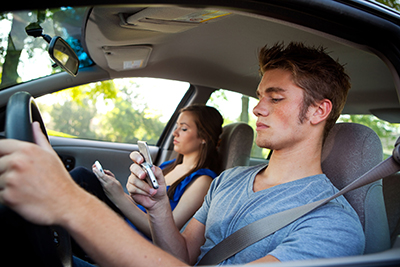
A recent study shows teen drivers are more likely to cause crashes resulting in injury or death during the summer months.
When your teen driver picks up the keys, you may casually say, “Have fun and be safe.” But this is when your worry sets in.
In this blog, Breakstone, White & Gluck reports on the latest research on teen drivers along with essential safety fundamentals to share with your family. Our partners each have more than 35 years of experience representing those who have been injured by negligent drivers in Boston, Cambridge and across Massachusetts. To avoid these tragedies, we encourage parents to play an even more proactive role to encourage safety during the summer months.
AAA Foundation for Traffic Safety “100 Deadliest Days” Study
A new study reports two-thirds of people injured or killed in car crashes involve a teen driver. The AAA Foundation for Traffic Safety released this figure as part of its “100 Deadliest Days” report on the period from Memorial Day to Labor Day. During the past five years, nearly 3,500 people have been killed in crashes caused by teens during the summer months, according to AAA.
More than a quarter of the teen driving crashes were caused by speeding. Teens who were drinking and driving caused 17 percent of the deadly collisions while distracted driving behaviors caused 9 percent of the deaths.
Other findings:
- Teen drivers, age 15-18, are 17 percent more likely to cause a fatal car crash in the summer than other times of the year.
- The legal age for consuming alcohol is 21 years old in every state. Yet 1 in 6 teens involved in fatal summer crashes tested positive for alcohol.
- More than 52 percent of teens participating in AAA’s research reported they had read a text message or email while driving in the past 30 days. Another 40 percent admitted to sending one.
- As part of its research, AAA used in-vehicle dash cameras and found 58 percent of teens who caused a crash were engaged in distracted behaviors. This was four times as high as federal estimates.
Other research goes deeper, showing teen drivers crash nearly 4 times as often per mile as drivers age 20 and up (Insurance Institute of Highway Safety.) The younger the driver, the more likely they are to crash due to inexperience or risky behaviors. Even a couple years can make a significant difference. For instance, the crash rate for 16-year-old drivers is 1.5 times as great as for 18- and 19-year-olds.
A few tips for your family:
Teen driving agreement. If you have never done so, now is a good time to have your child sign a teen driving agreement. Don’t just get a signature. Ask your teen to read each point out loud and ask if they understand or have any questions.
Massachusetts Junior Operator Law. Remind your teen that they have additional restrictions under the state’s junior operator law. If they violate the law, they may be cited and the infraction will go on their driving record. There is nothing you can do to help them at that point unless you plan to hire a criminal defense lawyer and attempt to challenge the citation.
For the first six months, drivers age 16 ½ to 18 cannot carry passengers under the age of 18, except for family members. The law also bans junior operators from driving between the hours of midnight and 5 a.m. and cell phone use is not allowed for any reason. There are additional consequences for driving under the influence of alcohol, speeding or drag racing.
Drinking and Driving. Explain to your teen that there is a zero tolerance policy for drinking and driving in your home. Encourage them to avoid parties where there are a large number of teens or where teens may be drinking.
At the same time, they should never get in the car with a friend who has been drinking and you will do everything you can to help them get home safely in situations involving alcohol. Come up with an emergency plan together now before there is a crisis situation.
Drive with your teen. Ask your teen to tag along when you go to the grocery store or mall. Show them how you handle the parking lot or the busy intersection where you need to watch for cyclists and pedestrians. Talk through some of the steps out loud. Then, give them the wheel on the way home.
Set a good example. Do not heavily consume alcohol and never drive if you do. Put your cell phone in the back seat when you drive. If your teen calls, say, “I was driving and couldn’t talk.” If you use a hands-free driving device, consider limiting use while your teen gets started on the road.
About Breakstone, White & Gluck
At Breakstone, White & Gluck, our Boston car accident lawyers have over 100 years combined experience. Our lawyers are committed to providing aggressive representation and obtaining the best possible financial results for clients – in every case. We represent clients injured by car crashes and in truck accidents in Boston, Cambridge, Somerville and across Massachusetts.
For a free legal consultation, contact us at 800-379-1244 or 617-723-7676 or use our contact form.
Are You Riding in a Recalled Uber or Lyft Vehicle?
 A new report says Uber, Lyft and their drivers should move to fix auto recalls quickly. What actually happens is far different in many cases.
A new report says Uber, Lyft and their drivers should move to fix auto recalls quickly. What actually happens is far different in many cases.
In New York and Seattle, one in every 6 rideshare vehicles registered for Uber and Lyft has an open safety recall on it, according to Consumer Reports. This means while a vehicle has been recalled, the driver continues to operate it and carry passengers without addressing the broken parts. Some of the recalls, such as those involving Takata airbags, have been associated with serious car accidents and injuries. Others involve defective seat belts or the potential for car fires or engine failure.
Consumer Reports reviewed safety records for 94,000 rideshare vehicles registered to Uber and Lyft in New York City and King County, Washington, where Seattle is located. Some drivers work for more than one company, so the consumer website grouped them together and also included some data for smaller competitors.
Consumer Reports called for stronger safety recall laws and says rideshare vehicle defects should be repaired promptly to protect the public from car accidents and injuries.
When shown the data, Uber’s response was that it “encourages and reminds” drivers to have recalls fixed. The company said it blocks certain vehicles from using its platform if there is a “DO NOT DRIVE” warning from the manufacturer or the National Highway Traffic Safety Administration (NHTSA). Uber also participates in the NHTSA’s twice-a-year campaign to raise awareness about addressing auto recalls.
Lyft’s response was rideshare drivers, by using their personal vehicles, are representing that their cars meet safety standards. It went on to say drivers have a “strong personal incentive” to repair their vehicles since they are used for work and in their personal lives, “driving their kids to school or friends around town.” The company said it works with lawmakers, regulators and local officials to develop safety regulations.
Safety Tips for Rideshare Passengers
Use an App to Check For Recalls
Consumer Reports suggests consumers check for auto recalls using the myCarfax app. Once you book your Uber or Lyft, you will receive the vehicle’s license plate. Type that number into myCarfax to check if the car has a safety recall.
Avoid the Front Seat
You can also avoid the front passenger seat. Rideshare drivers may still be operating with defective Takata airbags. Takata and auto manufacturers have spent years recalling millions of airbags because they have the potential to explode and cause traumatic and deadly injuries. Around the world, 24 people have been killed and hundreds of people have suffered injuries.
The Takata recall repairs have been slow at times. The NHTSA has announced the recalls in increments and there have been delays in delivering new airbags to local car dealers at times. But rideshare drivers and the companies have a greater responsibility to address safety recalls because they provide transportation to the public.
Monitor the Model Year of Your Uber
Consumer Reports observed a number of Lyft and Uber vehicles operating even though they didn’t meet the vehicle age requirements set by the rideshare companies or states and cities. This isn’t exactly an auto part recall, but it is closely related. Cars should have expiration dates. An aging vehicle can put rideshare passengers at risk.
The next time you are in a Lyft vehicle, remember the company requires Massachusetts drivers to use vehicles which are 2003 or newer; vehicles should be 2004 or newer on Cape Cod, Springfield and Worcester. Read the Lyft application checklist. As for Uber, the company requires vehicles to be 15 years or newer. Read the Uber vehicle requirements.
Report Any Safety Issues
If you use a rideshare vehicle and observe safety risks, take a photo and report your concern to the rideshare company or local police.
About Breakstone, White & Gluck
With more than 100 years combined experience, our Boston personal injury lawyers specialize in representing individuals who have suffered catastrophic injuries in car crashes, commercial truck collisions and Uber and Lyft accidents. Breakstone, White & Gluck is experienced at filing successful claims against both the major rideshare companies.
Learn your legal rights if you have been injured. Call our law office for a free legal consultation today: toll-free 800-379-1244 or 617-723-7676 or use our contact form.
City of Boston Pursues 20 MPH Speed Limit to Reduce Traffic Fatalities and Pedestrian Injuries

In Boston, city officials are interested in lowering speed limits to 20 mph in neighborhoods to reduce traffic fatalities. The proposal comes just two years after the city lowered speeds from 30 to 25 mph and will require state approval.
First, the City of Boston dropped speed limits to 25 mph, with a goal of reducing traffic fatalities and pedestrian injuries. Now, Mayor Marty Walsh and the Boston City Council have their eyes on 20 mph on neighborhood streets. The next step is obtaining state approval.
The City of Boston first sought to lower speed limits as part of its VisionZero campaign a few years ago. That proposal also required approval from the state Legislature and Gov. Baker’s signature.
Gov. Baker signed the Municipal Modernization Bill into law in 2016, including language that allowed cities and towns to lower the default speed limit from 30 to 25 mph. Cities and towns can now lower speed limits on all (or select) municipal roads in thickly settled areas or business districts. Many communities have done so, including Boston, Cambridge, Quincy, Arlington and Dedham. Now, unless traffic signs are posted otherwise, it’s 25 mph in these communities.
While the speed limit in these communities has dropped, the fines remain the same. In Massachusetts, speeding carries a $105 fine for speeding. If you exceed the speed limit by 10 mph, there is an extra $10 fine per each mile per hour.
Boston was the first to approve lower speeds, with this taking effect in January 2017. But the City of Boston’s goal was always 20 mph and remains so for city neighborhoods. In fact, the Boston City Council approved a 20 mph speed limit back in 2016.
As the City of Boston pursues a 20 mph speed limit for neighborhoods, there is early data showing that the 30 to 25 mph drop has changed traffic patterns for the better. According to an Insurance Institute for Highway Safety study, after the lower speed limit took effect, Boston saw a 29 percent reduction in traffic traveling over 35 mph.
Mayor Walsh also announced other transportation initiatives last week, including the creation of special drop-off and pick-up sites for Uber, Lyft and other ridesharing vehicles. Data from the Massachusetts Department of Public Utilities confirms that Boston is the truly the hub of ride-hail services. During 2017, nearly 35 million rideshare trips began in the city. Boston saw more than 6 times as many rideshare starts as Cambridge, which has the second largest presences in Massachusetts.
Walsh’s other proposal is to give every student in the Boston public school system a MBTA pass. The price tag hasn’t been negotiated yet with the MBTA. Currently, the city receives a subsidy from the MBTA and pays $5.6 million for MBTA passes for students in Grade 7 and 8 who live more than a mile and a half from their schools.
Data That Supports 20 MPH
- According to the VisionZero Network, 9 out of 10 pedestrians who are hit by a vehicle traveling 20 mph survive. Increase the speed to 30 mph and the survival rate drops to 50 percent. At 40 mph, just 10 percent of pedestrians survive.
- Speed is a factor in nearly one-third of all traffic deaths in the U.S. (Source: VisionZero Network).
- Speeding crashes claimed the lives of 59,374 people on U.S. roads from 2010 to 2015 (Source: VisionZero Network).
- Cars speeding through red lights are a leading cause of urban car crashes, according to the Insurance Institute for Highway Safety. Some states and local communities permit use of red light and speeding cameras to improve enforcement. But many do not, including Massachusetts and our neighboring New England states. Rhode Island is the one exception, allowing red light cameras by state law and city ordinance. State law permits use of speeding cameras in school zones on weekdays.
Related:
Walsh to propose 20 mph limit in neighborhoods and new Uber, Lyft pickup sites, Boston Globe, March 7, 2019
Slow Down! Boston, Cambridge and Other Cities Have Dropped Speeds to 25 MPH, Massachusetts Injury Lawyer Blog, May 23, 2017



